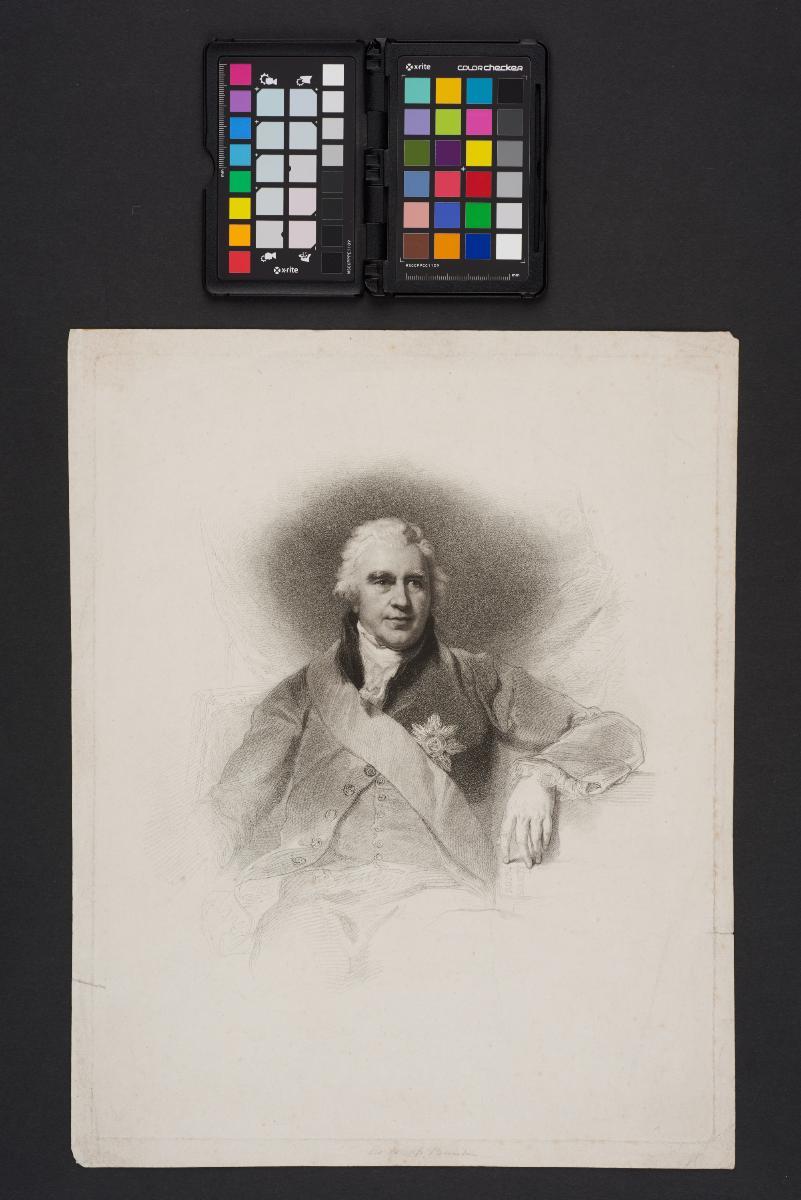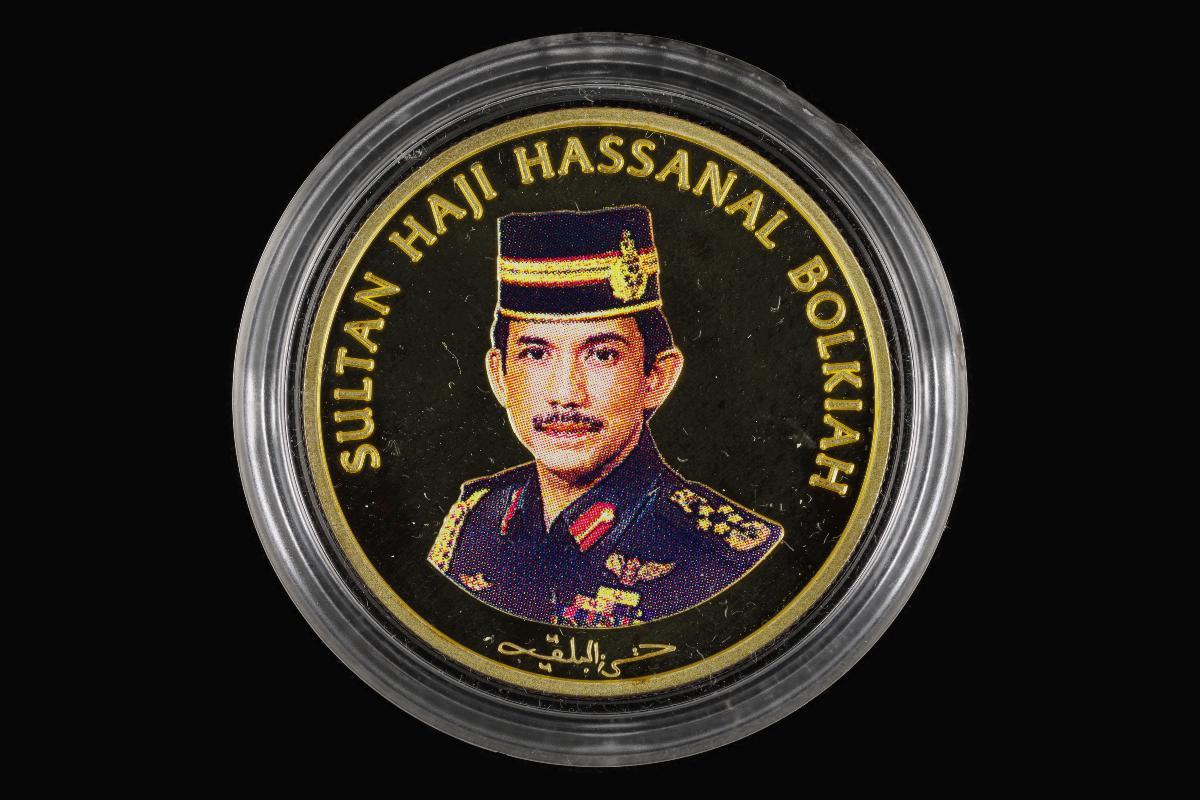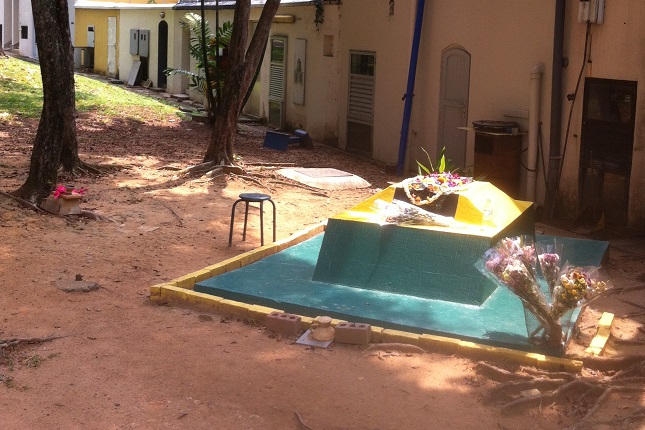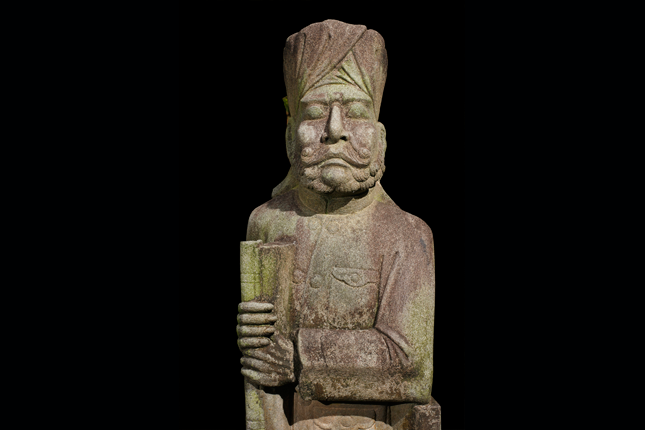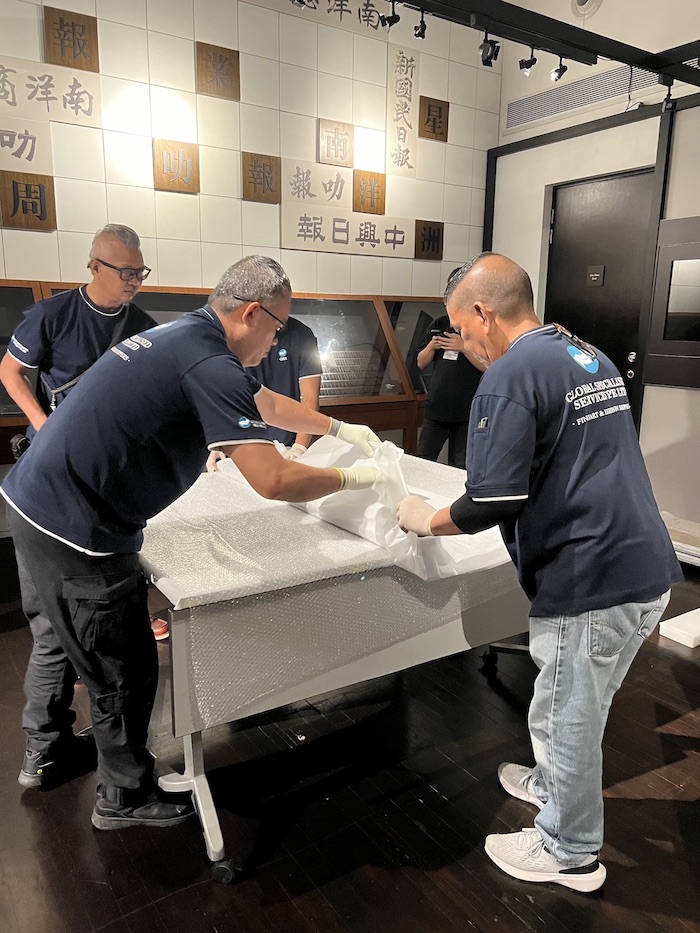Image size: 58.0 x 98.0 cm
Mandalay artist Saya Aye (1872-1930) studied under the court painter, Saya Chone (1866-1917). Saya Chone pioneered the genre of royal family portrait such as these which emerged towards the end of the Konbaung era. Saya Aye was one of the first artists to combine traditional and Western techniques. His reputation as a traditional painter was established through his paintings commissioned for the newly constructed religious paintings under U Khanti’s extensive project of protecting the arts and traditions of the Konbaung era. Upon Saya Chone’s passing in 1917, Saya Aye became the foremost nipattaw painter in Upper Burma. The term nipattaw is used for those who paint scenes for the pagoda environment. Nipattaw was painted on various mediums, such as cloth, canvas, wood, but most predominantly on metal plate, together with the use of easily applicable imported paints, which contributed to the decline of the mural and parabaik tradition (painting on manuscript). Aristocratic figures are depicted with dense composition characteristic of traditional Burmese painting, yet it is combined with European influences such as linear perspective, chiaroscuro and anatomical realism. Works of this kind were sometimes displayed to the public at cremation ceremonies for monks or placed in pagoda.







